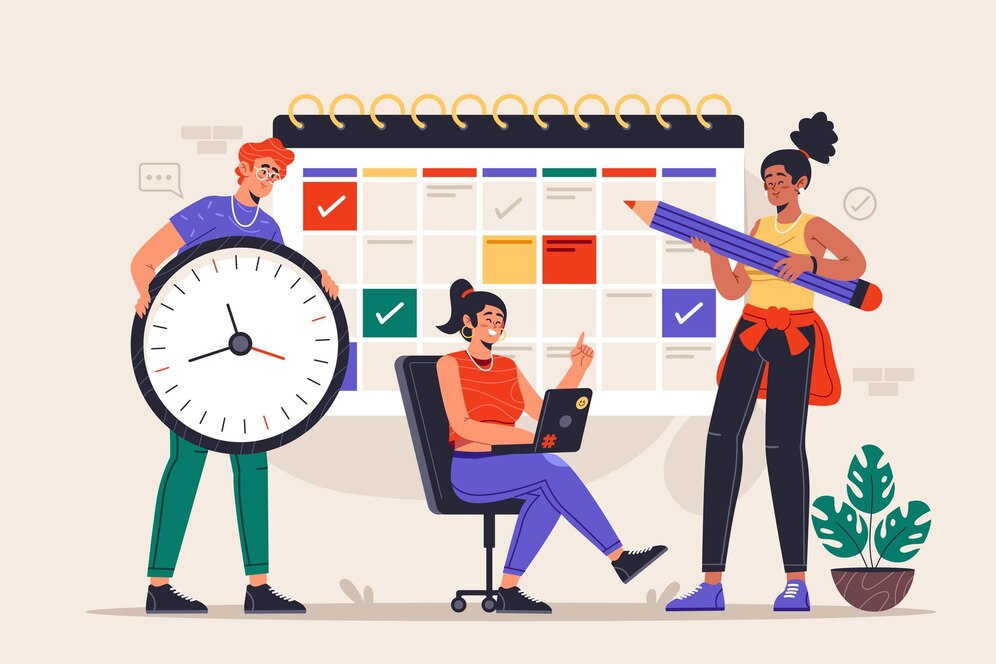Sarah, a working mom of two, once found herself drowning in deadlines, forgotten appointments, and a home cluttered with unwashed dishes and unsorted mail. Her breaking point came when she missed her daughter’s school play because it wasn’t in her calendar. Determined to change, she spent a weekend overhauling her routines. Within a month, she was not only meeting deadlines at work but also cooking family dinners and even finding time for yoga. Her secret? A mix of simple systems, intentional habits, and tools anyone can adopt.
If Sarah can transform chaos into calm, so can you. In this guide, you’ll discover strategies to stay organized and productive at home, work, and everywhere in between.
Why Staying Organized Matters More Than You Think
Disorganization isn’t just messy—it’s expensive. Studies show the average person wastes 55 minutes a day searching for misplaced items or information. That’s over 330 hours a year! Worse, clutter and chaos drain mental energy, making it harder to focus or think creatively. On the flip side, organization reduces stress, saves time, and creates space for what truly matters.
Key Areas to Focus On for Long-Term Success
- Prioritization (Knowing what’s urgent vs. important)
- Environment Design (Creating spaces that work for you)
- Time Management (Mastering your schedule, not the other way around)
- Routines & Habits (Automating productivity)
Let’s break these down.
1. Prioritization: The Art of Doing Less, Better
Productivity isn’t about doing more—it’s about doing the right things. Start with the Eisenhower Matrix:

- Quadrant 1 (Do Now): Crises, deadlines.
- Quadrant 2 (Schedule): Strategic planning, self-care.
- Quadrant 3 (Delegate): Interruptions, some emails.
- Quadrant 4 (Delete): Mindless scrolling, trivial tasks.
Pro Tip: Spend 10 minutes every morning sorting tasks into these categories. Focus 80% of your energy on Quadrant 2 to prevent burnout.
2. Environment Design: Declutter Your Space, Declutter Your Mind
Your surroundings shape your behavior. Here’s how to optimize them:
At Home
- Designate Zones: Create specific areas for work, relaxation, and hobbies. Even a small “office corner” signals your brain to focus.
- The 5-Minute Tidy: Set a timer to declutter surfaces daily. No one’s home is spotless, but avoiding pile-ups prevents overwhelm.
- Go Digital: Reduce paper clutter with apps like Evernote for notes and Dropbox for documents.
At Work
- Desk Feng Shui: Keep only essentials on your desk. Use drawer organizers for supplies.
- Digital Cleanse: Unsubscribe from unused email lists. Organize files into clearly named folders.
- Noise Control: Use noise-canceling headphones or ambient sound apps (like Noisli) to minimize distractions.
Case Study: A 2023 Stanford study found workers in tidy environments completed tasks 32% faster than those in cluttered spaces.
3. Time Management: Take Control of Your Calendar
Time is finite, but most of us treat it like an unlimited resource. Try these tactics:
Time Blocking
Schedule every hour of your day, including breaks and leisure. Tools like Google Calendar or Toggl Plan make this visual. Example:
- 8–10 AM: Deep work (no emails!)
- 10–10:15 AM: Coffee break
- 10:15–12 PM: Meetings
The Pomodoro Technique
Work for 25 minutes, then take a 5-minute break. After four cycles, take a 15–30 minute break. Apps like Focus Keeper automate this.
Batching Tasks
Group similar tasks (e.g., replying to emails, making calls) to reduce mental switching costs.
Pro Tip: Schedule “buffer time” between meetings to avoid burnout.
4. Routines & Habits: Automate Your Productivity
Habits eliminate decision fatigue. Build these into your day:
Morning Routine
- 5-Minute Journal: Write 3 things you’re grateful for and your top 3 priorities.
- Movement: Stretching or a 10-minute walk boosts energy.
- Eat the Frog: Tackle your hardest task first.
Evening Routine
- Prep for Tomorrow: Lay out clothes, pack lunches, review your schedule.
- Shutdown Ritual: Spend 10 minutes tidying your workspace and writing down unfinished tasks.
Story: Author James Clear credits his 1% daily habit improvements (from his book Atomic Habits) to achieving long-term goals.
Productivity Planning: Your Blueprint for Success
A plan turns goals into actionable steps. Follow this framework:
Step 1: Weekly Review
Every Sunday, ask:
- What went well last week?
- What needs adjustment?
- What are my top 3 goals for this week?
Step 2: Daily Planning
Each morning, spend 5 minutes:
- Reviewing your schedule.
- Updating your task list (use the 1-3-5 Rule: 1 big task, 3 medium, 5 small).
Step 3: Quarterly Goals
Break annual goals into 90-day chunks. This makes progress tangible. Example:
- Q1: Launch website
- Q2: Grow email list to 1,000
Tool Recommendation: Notion or ClickUp for tracking goals and tasks.
Bonus: Top Tools to Stay Organized
- Task Management: Todoist, Trello
- Notes & Ideas: Notion, Obsidian
- Time Tracking: RescueTime, Clockify
- Home Organization: Sweepy (for chores), Sortly (for inventory)
Final Thoughts: Start Small, Think Big
Staying organized isn’t about perfection—it’s about progress. Begin with one tip from this guide (maybe the 5-minute tidy or time blocking) and build from there. Remember, Sarah didn’t overhaul her life overnight. She started with a single planner and grew from there.
Your Turn: Which strategy will you try first? Share in the comments!



